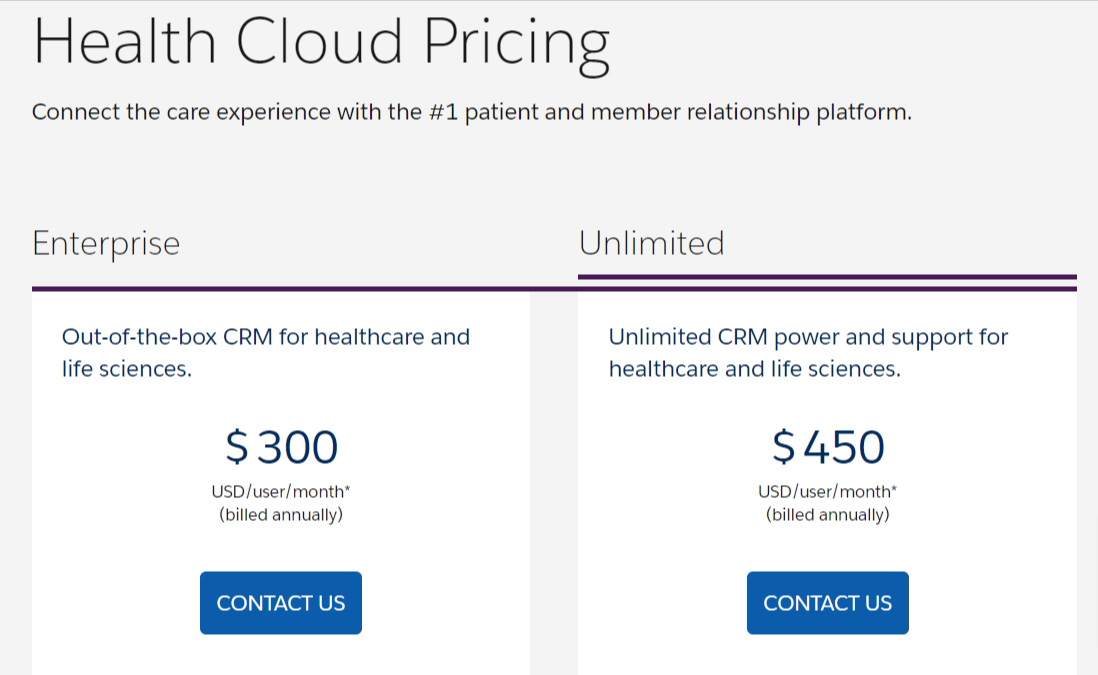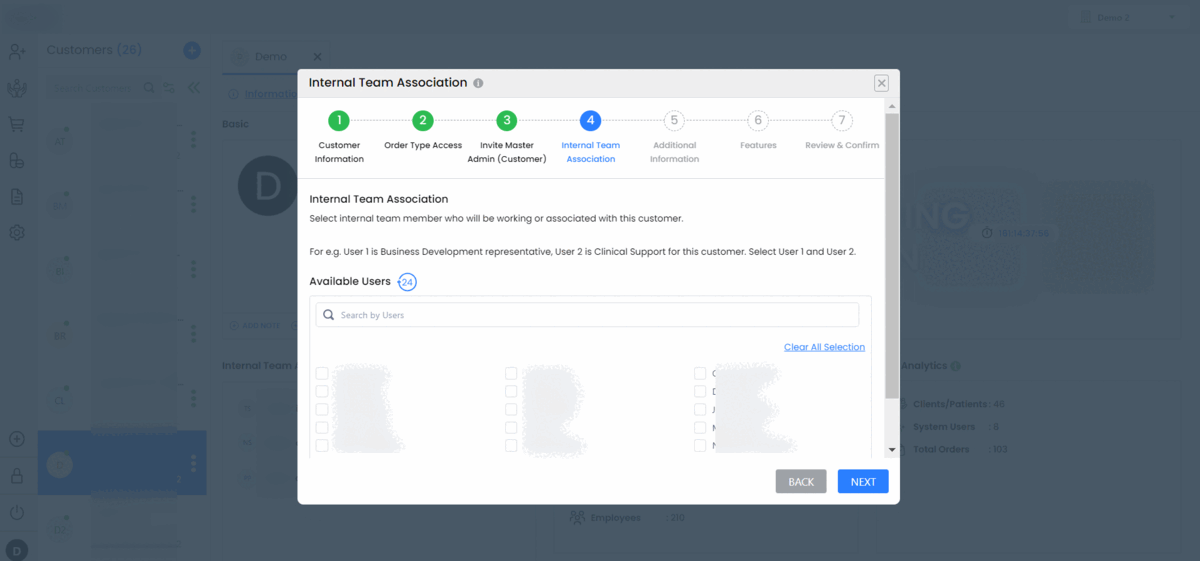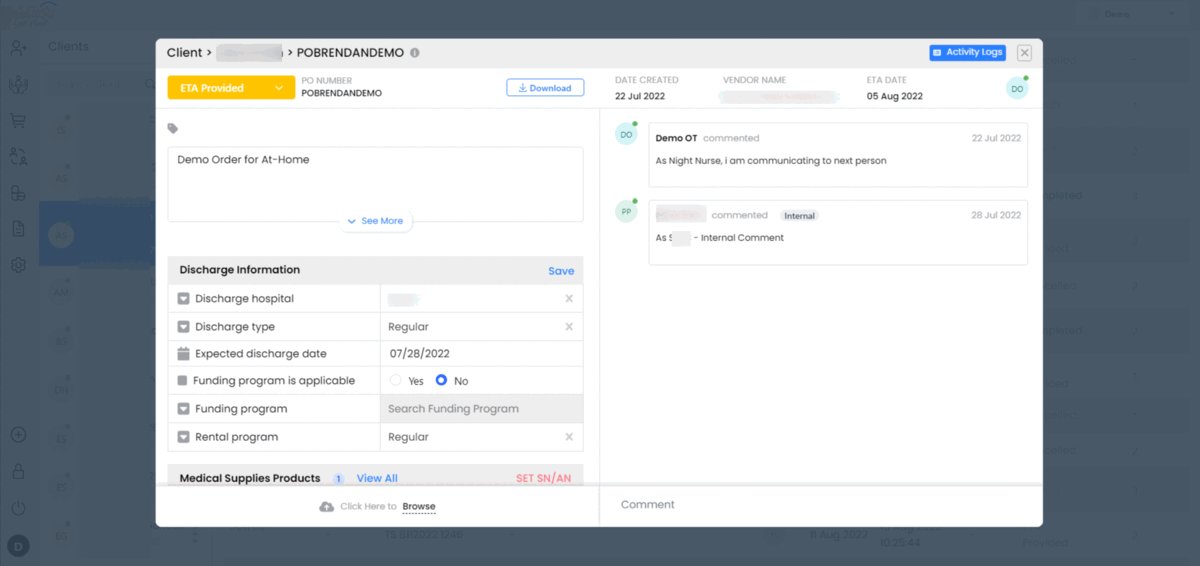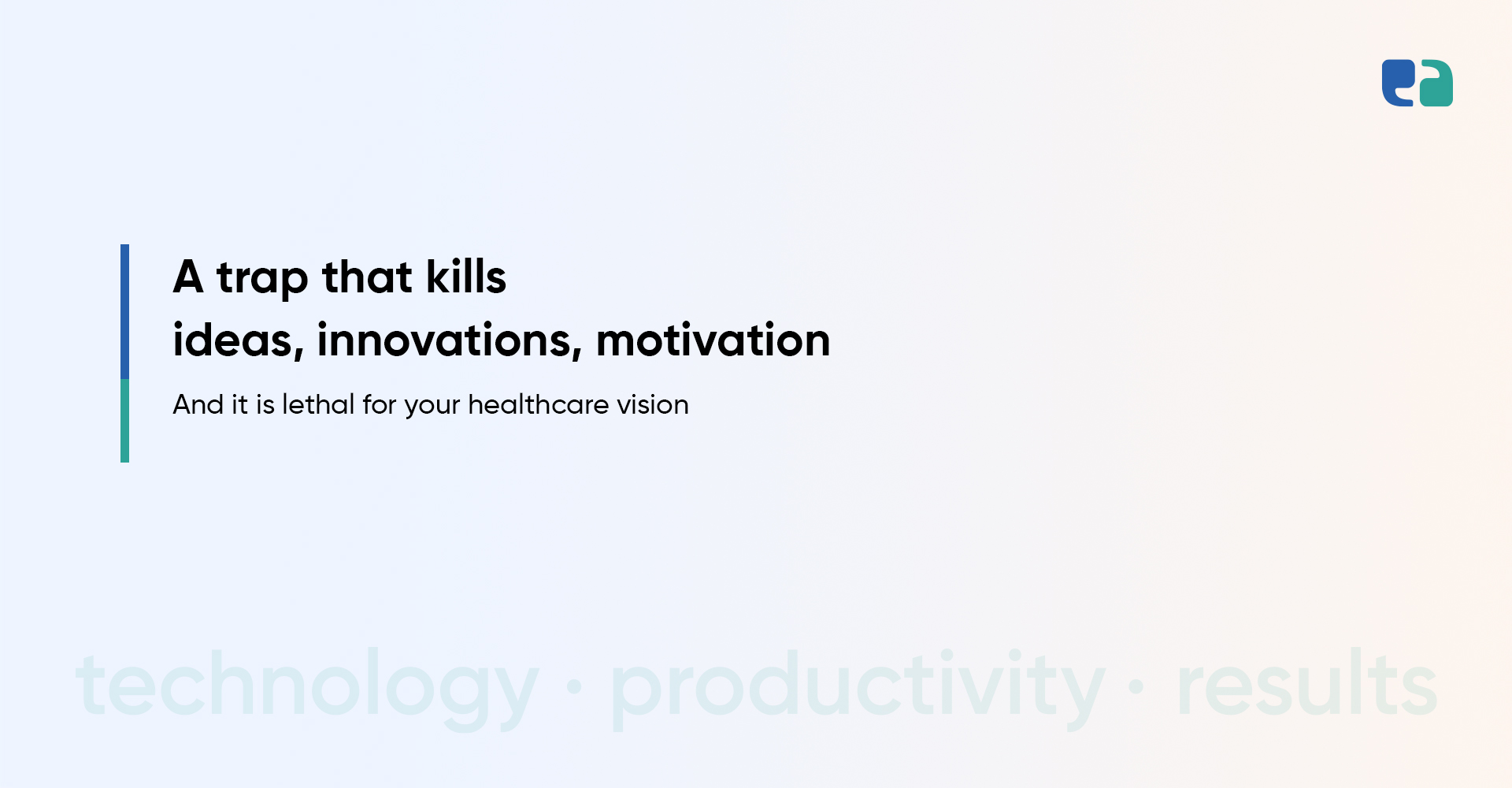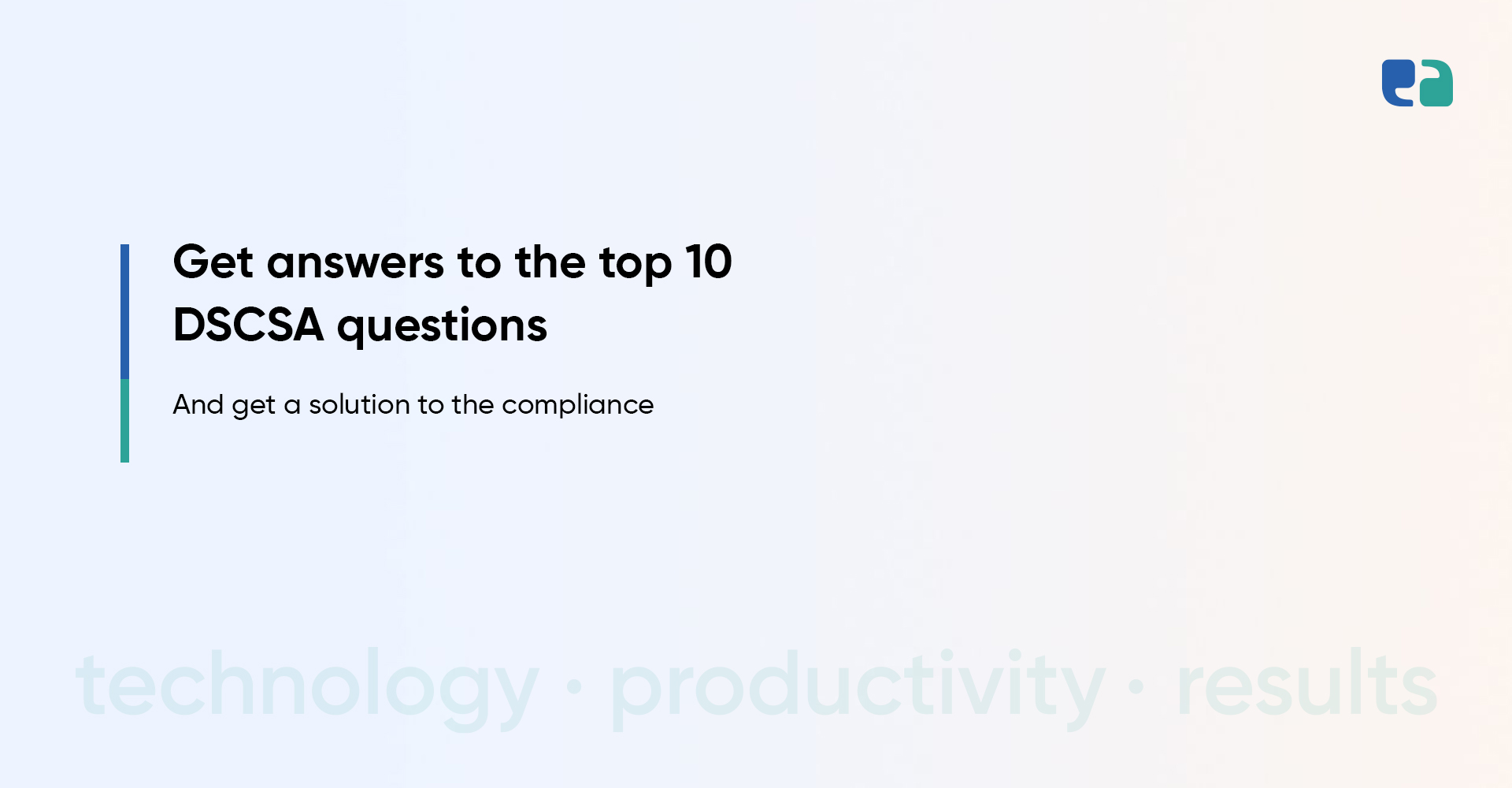Quick summary: Without a doubt, Salesforce is the number one CRM.
Several healthcare entities including hospitals and pharmaceutical companies are using it.
But its pricing is something that is a matter of concern – to both big healthcare players and small and medium-scale healthcare entities.
So, in this blog, we will share the detailed pricing calculation of the Salesforce Health Cloud which is the healthcare version of its CRM.
Also, we will share the best alternative to Salesforce for healthcare CRM for your hospital, pharmaceutical company, or any other healthcare entity.
(Please note: Our intention is not to defame Salesforce. It is already a great product and we admire its engineering team. We are just putting facts that are publicly available. Readers are advised to consume it rationally.)
Salesforce for Healthcare CRM pricing: A detailed calculation
The following are the different types of costs you have to bear before using fully-functional Salesforce CRM for your healthcare business.
You must look at Salesforce for healthcare contract terms and payment timeline
Well, in most cases, you need to sign a contract of 3 years with Salesforce.
And regarding its payment timeline, you have to make payments annually.
So, if you are thinking that the upfront cost of going for Salesforce’s healthcare CRM is low, you are wrong.
You have to pay the first year’s payment today to start using the CRM from tomorrow for the next one year.
To continue using the CRM for the 2nd year, you have to pay the 2nd year fee before the last day of 1st year.
And the same for the 3rd year.
In this sense, you are paying $100,000+ for something – for at least the first year – which you haven’t used!
This also makes you look for the best alternative to Salesforce for healthcare CRM.
Salesforce’s Healthcare CRM and its UI problem
The product is exceptional.
But its UI is not healthcare-friendly, restricting healthcare staff from easily navigating the UI in an intense clinical environment.
The reason behind this is the lots of functionalities of Salesforce Health Cloud.
And an unsuccessful attempt to fit everything on a single screen.
Here are some of the reviews of actual users and what they are complaining about the most.
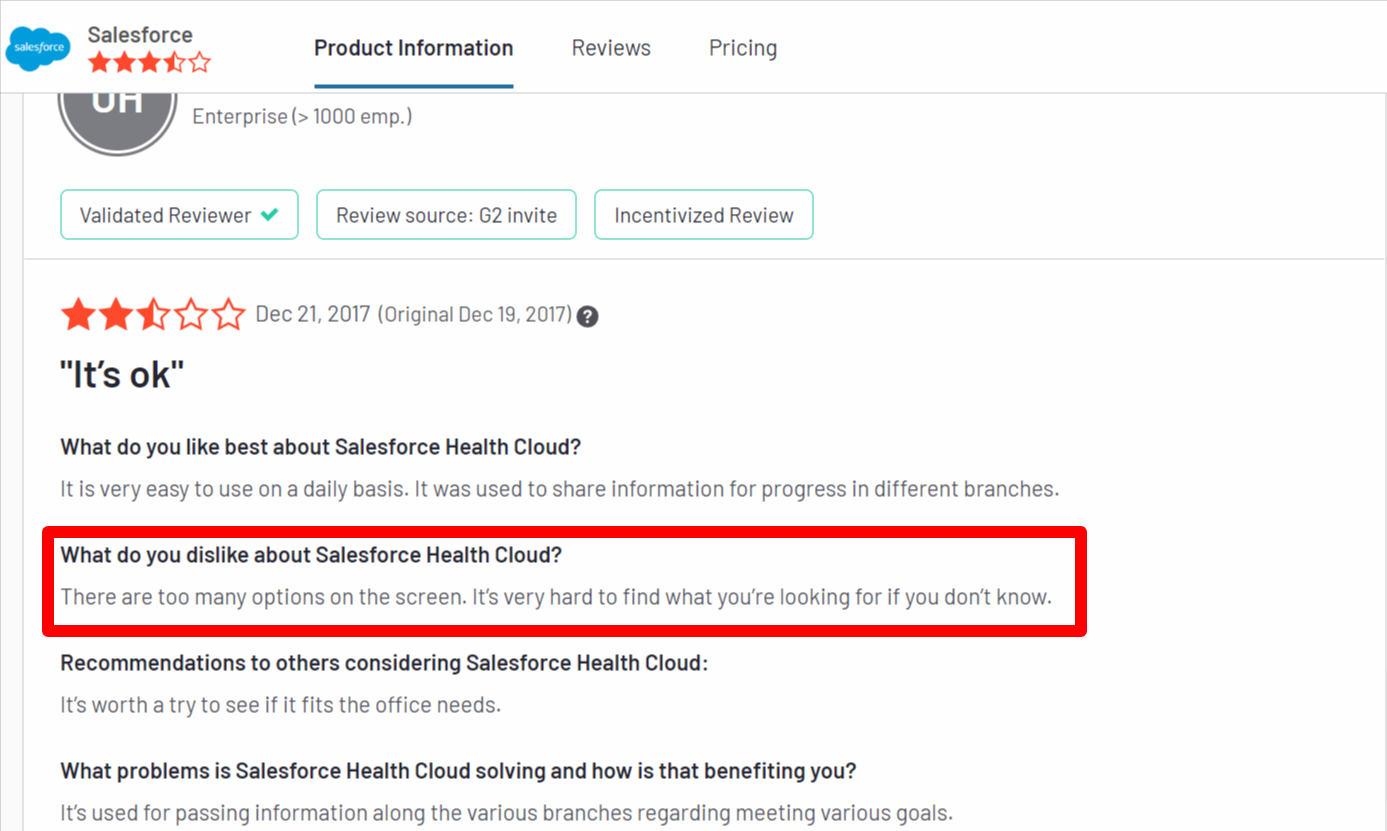
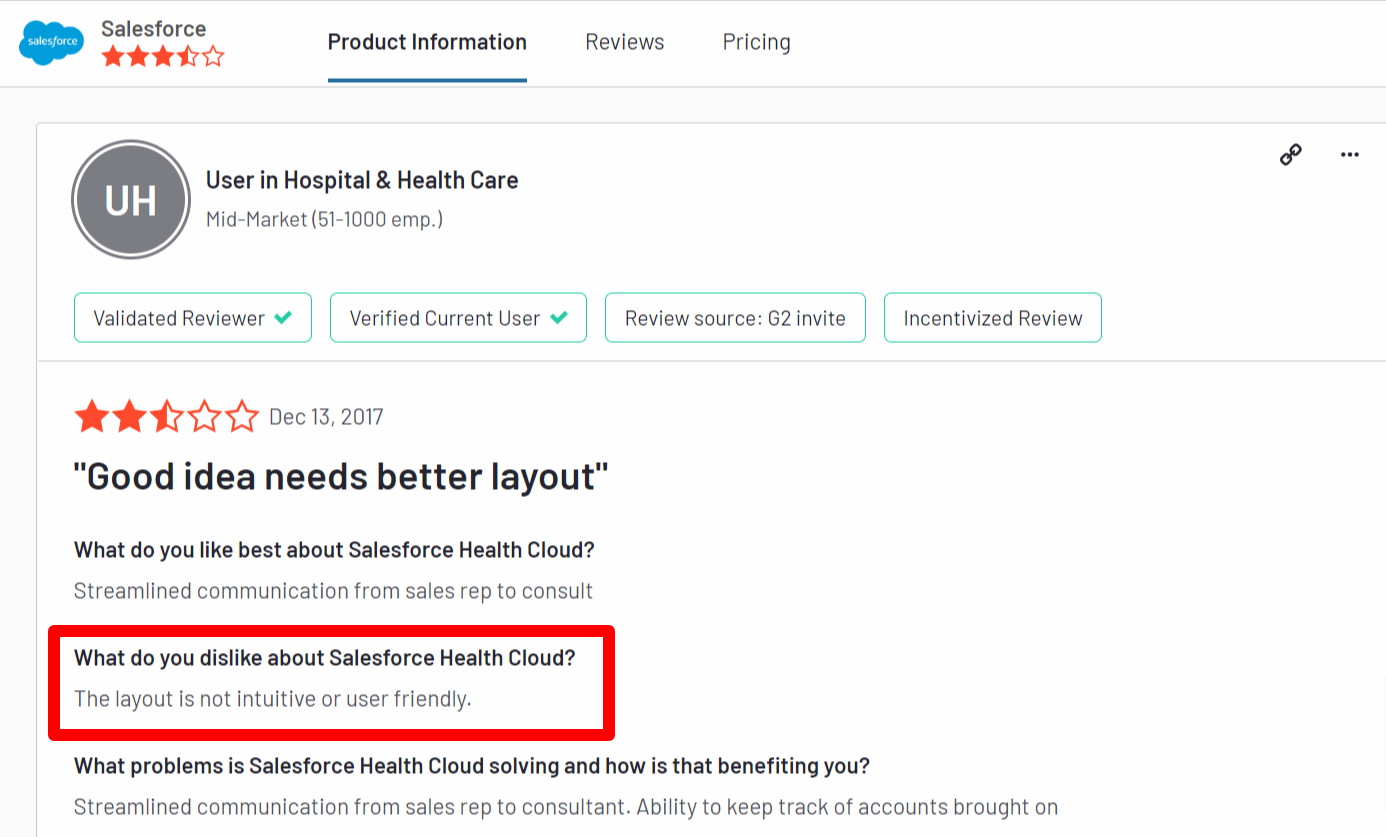
In essence, pricing, customization, and poor UI experience are the major reasons why many don’t consider it the best CRM for hospitals or the best pharmaceutical CRM software.
So, now you must be wondering – what’s then the best alternative to Salesforce for healthcare?
Let us show you something epic!
Our best alternative to Salesforce for healthcare!
Yes. Our best team of healthcare IT engineers has worked relentlessly for the last 2 years to build the best alternative to Salesforce for healthcare.
Here is why we are calling it the best.
The pricing structure of our alternative to Salesforce for healthcare
We bet you. You’ll not find such pricing models in any other Salesforce Health Cloud alternatives.
Because here – there is no monthly or yearly subscription.
You just need to pay a one-time licensing fee!
In which you’ll get values like –
- A lifetime usage rights
- No limits on users
- No limits on customization too
- Your own branding.
Top 7 outstanding features of our alternative to Salesforce Health Cloud
Well, being a healthcare IT company, we already know what is something our healthcare system lacks and what is something our providers want.
All 50+ features of our CRM solution are hand-picked and tailored-made for the healthcare industry.
The following are the top 6 features of our alternative to Salesforce for healthcare.
(Please note: These images are actual screenshots of the CRM. However, the final screens might have some differences as we customize the product as per the unique needs of each client.)
That’s not it. There are some other epic features too which make it the best alternative to Salesforce for healthcare
Other useful features of our healthcare CRM solution include,
Top use cases you can execute via our medical CRM solution
We call it the healthcare ecosystem as it has multi-user architecture.
Besides, because of its no-code capabilities, it is limitless.
Thus, any of the healthcare use cases can be executable with it.
And The following are the top ones.
Top-notch benefits of having a CRM for healthcare
CRM is a technology-driven approach to managing relationships with customers, including patients and their families in the healthcare industry.
Here are some of the benefits of implementing CRM in healthcare:
In summary, CRM helps healthcare organizations to improve patient experience and engagement, streamline administrative processes, manage patient data, increase patient loyalty, and comply with regulations.
How to get started with our reliable, secure, flexible, and healthcare-specific CRM solution?
The process is very straightforward.

